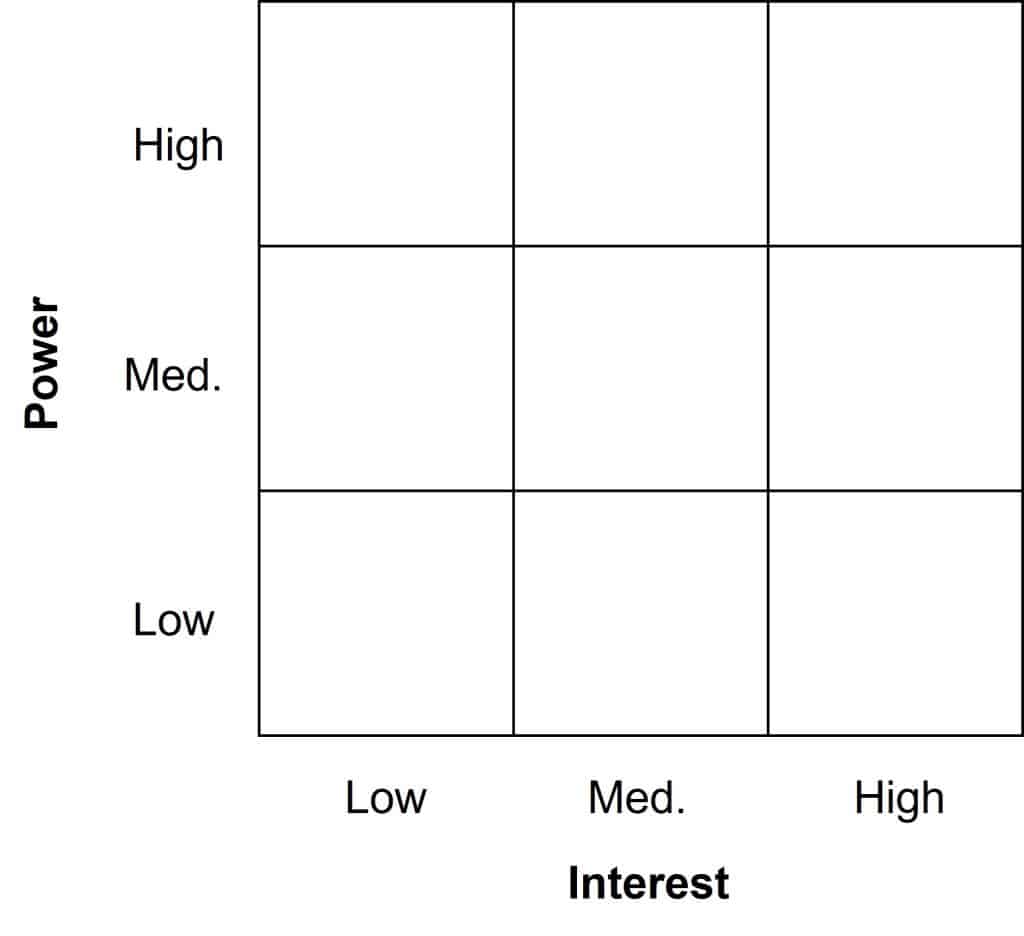Stakeholders are the people or groups who will be interested in the outcome of our project. They will be present in any project that we undertake. Stakeholders are an important force in project management – they might help us to achieve parts of the project and can become champions for the project. They may also present barriers to achieving our project as intended. Read this stakeholders guide to understand the role of the stakeholder and what we can do to manage them to ensure their support for our project.
What is a stakeholder?
A stakeholder is someone who has an interest in or will be impacted by the project. They will have a vested interest in the project, which may align positively or negatively with our project goals. It is important that we understand who our stakeholders are from the outset so that we can think about how to communicate with them and understand their opposition to or support for our project.
How do we find our stakeholders?
The first thing we need to do is determine who our stakeholders are. If you work in a project organisation, you might have a list of stakeholders from previous projects that you can draw on. If you are starting from scratch, however, you will need to compile this list now. It can be useful to sit the project team down and brainstorm a list of stakeholders. This gives the whole team the opportunity to get involved in understanding who the stakeholders are. It also allows different team members with different perspectives to present their ideas, meaning that you might consider stakeholders that you would otherwise have missed.
Once we have a list, we can work through and determine whether these are stakeholders who have an interest in or will be impacted by our project. It is important that this list fits our specific project. Even if you have a list of stakeholders from previous projects, it is useful to go through this and ensure that it applies to your project. You don’t want to invest lots of time into a stakeholder who has a minor role in your project, or who is much less interested than another.
Stakeholder management
Once you have the list of stakeholders, it is useful to put them in to a stakeholder management grid. This grid allows a project manager to assess the power and interest of each individual stakeholder.

Figure 1 An example stakeholder management grid.
You should determine the level of power and interest your stakeholder has and map this against the other stakeholders for your project. It is important that we understand the relative positions of our stakeholders so that we can form a stakeholder management plan which is suited to the power and interest of each individual stakeholder. We want our plan to be well informed and reflecting the full picture of our project’s stakeholders.
Why do we need a stakeholder management plan?
We want to put a stakeholder plan in place so that we know the requirements for each stakeholder. Our stakeholder management plan develops out of our stakeholder management grid. Once we have assessed the power and interest of each stakeholder, we can determine how to manage our stakeholders.
As part of completing the stakeholder management grid, we will see that each stakeholder has a different level of power and interest. As such, we will need to personalise our approach to their management. We will approach the handling of a stakeholder with high power and high interest to that of a stakeholder with low power and medium interest very differently. Creating our stakeholder management plan allows us to set out how often and by what method we will communicate with our stakeholders, what additional requirements they might have and any action we might need to take to ensure their support.
Having a stakeholder management plan in place ensures that we know how to handle the different parties who are interested in our project. It provides us with guidance and structure to ensure that we communicate consistently with our stakeholders and can manage them appropriately within the project context.
Summary
In this stakeholders guide for beginners you will have discovered why stakeholders are a key element of your project. When planning, we need to understand their power and interest in our project. This helps us to plan communications effectively and work with the stakeholders to ensure cooperation and understanding from both sides. A stakeholder management grid is a simple tool for understanding the position of our stakeholders. We can use this to influence our stakeholder management plan, where we set out how we will manage each stakeholder. Using these tools and planning effectively, we can ensure that we are well prepared to handle our stakeholders and achieve a positive outcome for them as well as our project.